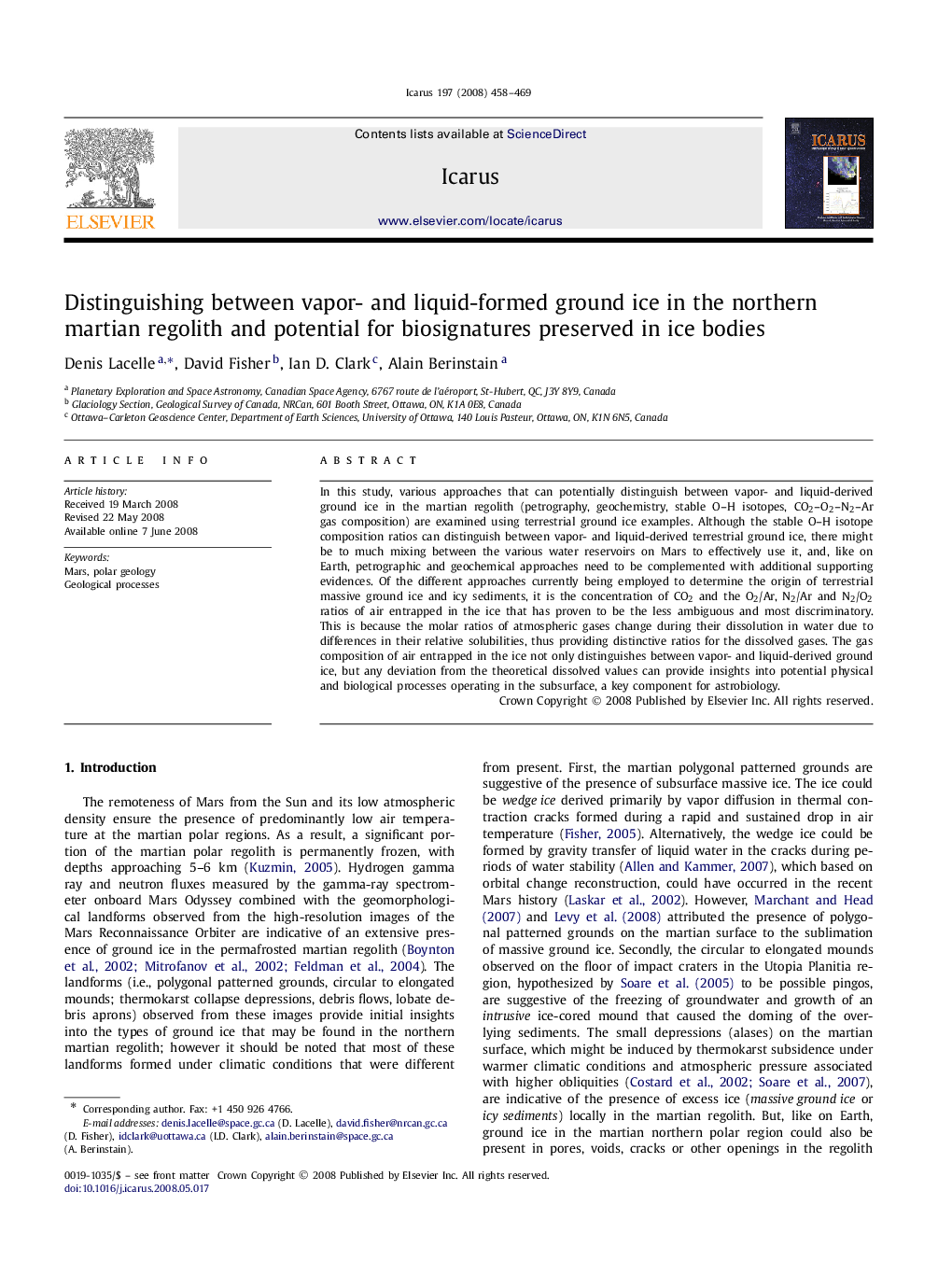| Article ID | Journal | Published Year | Pages | File Type |
|---|---|---|---|---|
| 1775793 | Icarus | 2008 | 12 Pages |
Abstract
In this study, various approaches that can potentially distinguish between vapor- and liquid-derived ground ice in the martian regolith (petrography, geochemistry, stable OH isotopes, CO2O2N2Ar gas composition) are examined using terrestrial ground ice examples. Although the stable OH isotope composition ratios can distinguish between vapor- and liquid-derived terrestrial ground ice, there might be to much mixing between the various water reservoirs on Mars to effectively use it, and, like on Earth, petrographic and geochemical approaches need to be complemented with additional supporting evidences. Of the different approaches currently being employed to determine the origin of terrestrial massive ground ice and icy sediments, it is the concentration of CO2 and the O2/Ar, N2/Ar and N2/O2 ratios of air entrapped in the ice that has proven to be the less ambiguous and most discriminatory. This is because the molar ratios of atmospheric gases change during their dissolution in water due to differences in their relative solubilities, thus providing distinctive ratios for the dissolved gases. The gas composition of air entrapped in the ice not only distinguishes between vapor- and liquid-derived ground ice, but any deviation from the theoretical dissolved values can provide insights into potential physical and biological processes operating in the subsurface, a key component for astrobiology.
Related Topics
Physical Sciences and Engineering
Earth and Planetary Sciences
Space and Planetary Science
Authors
Denis Lacelle, David Fisher, Ian D. Clark, Alain Berinstain,
